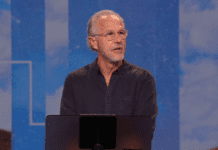The Missouri Baptist Convention, with 1,800 Southern Baptist Churches, responded to 19 disaster sites in 2021, including recovery efforts from storms and flooding within the state and in Kentucky, Louisiana, Illinois, Nebraska and North Carolina.
Missouri volunteers worked 72 cleanup jobs, relogged 33,777 hours, prepared 29,476 meals, completed 318 chainsaw jobs and 57 flood recovery jobs, cared for 206 children and reaped 19 professions of faith, according to the state’s annual report.
The Kentucky Baptist Convention, still helping Kentucky recover from 2022 flooding in eastern Kentucky and the devastation of tornadoes in western Kentucky in 2021, still found the resources to send a disaster relief team to help Florida recover from Ian. Kentucky Baptist Disaster Relief has 2,500 trained volunteers.
Coggins appreciates the many trained volunteers across the nation who cooperate in responding to tragedies with days’ notice, and promotes disaster relief work as a prime opportunity for Southern Baptists to share the love of Jesus.
“To fulfill our mission, we really need the people to be involved,” Coggins said. “But beyond that, it’s one of the ministries where you have an immediate opportunity to step into the life of a family, a survivor who’s hurting, whose life’s been turned upside down.
“There’s that sensitivity to things that maybe there’s not on a normal blue-sky day, and very gently, very lovingly, without any kind of manipulation,” Coggins said, “we’re able to lovingly point them to hope in Christ. And they’re very sensitive to that, very open to a lot of realities of life that maybe they weren’t before.”
Coggins appreciates and encourages Southern Baptist support of the Cooperative Program.
He urges Southern Baptists to “continue to give through their local church and learning about the Cooperative Program, learning what it does and how it funds our ministries.”
This article originally appeared here.











